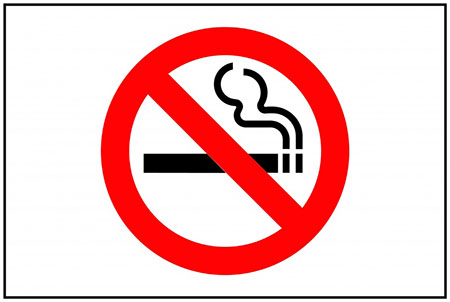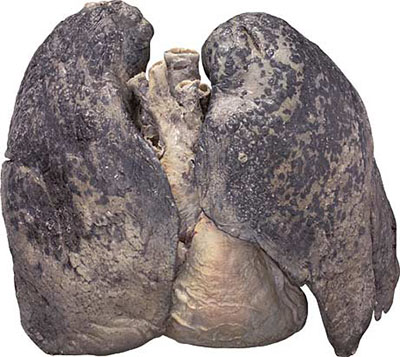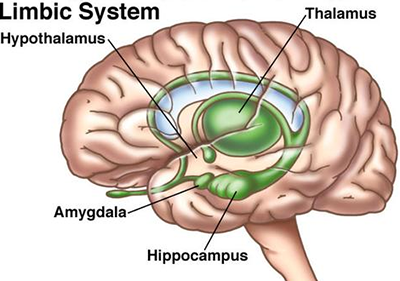
Source: www.signsbypost.com
This article aims to encourage smokers who have not considered quitting to start a quit attempt. For those who have tried and failed, to try again; and for those who have succeeded, to remain abstinent. The longer you are abstinent, the higher the chances of abstaining from tobacco smoking.
Introduction
The year is coming to an end once again, 2013 is making way for 2014. Each year around this period we start taking stock of our achievements over the past year and in our minds eye, we tick little boxes on resolutions we made at the beginning of the year and reflect upon them; did we successfully fulfil them? If we did not, why so?
For those with addiction, some of the resolutions include to stay sober, to quit using drugs and or to quit smoking. For those who have made it, applaud yourselves with “I did it!” It was a tough battle and you should be proud of your achievement.
By the same token, some of us may have missed the target, whilst others, may have missed it…yet… again! Fret not however, as studies have reported that some may need 12-14 quit attempts before being successful. Other studies have found that the more quit attempts one makes, the higher the likelihood for success. Therefore, if you attempted last year and missed your target, try again this year because you may well succeed this time around!
Dangers of smoking
If asked, almost every person in the developed and rapidly developing world has heard and probably knows at least one danger of tobacco smoking. Tobacco smoking kills six million people each year and is expected to increase to ten million within the next two decades. In Malaysia, an often reported number is 10,000 deaths as a direct or indirect result from smoking. For the general population, smoking takes 13-14 years of your life and for those with mental illness, for example depression (https://www.mmgazette.com/major-depression-and-you-dr-amer-siddiq/), this figure is between 20-25 years compared to a non-smoker.

Source: http://news.nationalgeographic.com
Tobacco smoke, especially from smoked cigarettes which is the most common form of smoking worldwide, releases 7000 toxic chemicals where 70 are believed to cause cancers. These toxic substances when burnt is known as ‘tar’, and together with the polycyclic aromatic hydrocarbons released during smoking, are the most likely culprits for the harms of tobacco. The ‘tar’ especially, is responsible for the staining of teeth, lips and nails of smokers. Inside the lungs where tobacco smoke eventually ends up, this same ‘tar’ acts on this inside as it did outside, resulting in the blackened lungs on post mortem. Clinically these toxins also cause the development of emphysema, chronic lung disease and eventually, lung cancer.
Smoking also increases the viscosity of blood and therefore increases the risk for heart diseases. Blocked vessels, especially in the smaller vessels of the genitalia lead to impotence in males. The action of the tobacco smoke also increases the risk for diabetes (https://www.mmgazette.com/5-mitos-tentang-kencing-manis/) and therefore adds another risk factor for a cardiac event, such as a heart attack (https://www.mmgazette.com/warning-in-case-of-heart-attack/).
Smoking does not only affect the smoker but also those around them through second-hand and third-hand smoking. Second-hand smoking is when those around the smoker inhale’s the tobacco smoke although they themselves were not smoking (passive smoking). The risk to health has been found to be similar as first-hand smoking. By no fault of their own, they are at an increased risk for cancer! More importantly, children of parents who smoke are at a higher risk for lung infections, asthma and for the babies, sudden infant death (SIDS). The risk to others does not stop there. More evidence is reporting about third-hand smoking, especially in confined spaces, where smokers leave residues of their tobacco smoke on fabrics around them which has been found to be equally dangerous to human health.
Tobacco is addictive……or is it?
Studies have consistently shown that it is the nicotine in tobacco which is the addictive substance and responsible for tobacco dependence. Smoking tobacco is the most efficient mechanism to take in nicotine. The nicotine inhaled acts directly at the brain (limbic system), involved with the reward-pathway (that controls pleasure) within 10 seconds of inhalation. Moreover, nicotine has been shown in both imaging and animal studies to release a brain chemical called dopamine, the main neurotransmitter responsible for addiction. Smoked tobacco has also been shown to change the brain with just one cigarette.

Source: http://mmcneuro.wordpress.com
Consistent ‘feeding’ of nicotine to the brain through smoking results in the brain involved with pleasure or reward to become ‘hungry’ for more nicotine as it becomes ever more desensitized to current ‘doses’ of nicotine due to the brain changes. This is reflected in the real world with the increasing consumption of cigarettes, from one to two to twenty cigarettes smoked per day. By then what was once a habit is now an addiction.
When smokers stop smoking abruptly, they start having physical withdrawal symptoms (listed below). Their mind and body eventually crave for cigarettes and they develop an intense desire for a cigarette (craving). These withdrawals can be intense, very uncomfortable and to some even ‘painful’. In fact, the avoidance of withdrawals is why smokers find it so difficult to give up and continue to smoke despite the many health hazards mentioned earlier.
| Nicotine Withdrawal Symptoms |
|
A friend related a poignant case which illustrates why (to me at least), tobacco smoking is not a habit but indeed an addiction. It involved a patient who is paralysed in all four limbs. Yet, he still needed to smoke despite these major handicaps. He needed others to help him purchase, light and put the cigarette to his lips. I sincerely hope he received treatment whilst he was seen for his ailments.
Are you addicted to tobacco smoking? Test yourself with the Fagestrom test for Nicotine Dependence below. If you score highly, it may be time to consider quitting.
| Score | 0 | 1 | 2 | 3 |
| Questions/Duration | After 60 minutes | 31-60 minutes | 6-30 minutes | Within 5 minutes |
|
Scoring: 0-2 Very low, 3-4 Low, 5 Moderate , 6-7 High , 8-10 Very high

Source: business.financialpost.com
Health benefits of quitting
The many benefits of quitting are felt as early as a few weeks and last as long as your lifetime. One of the earliest benefits is increased overall fitness. Quitters often relate feeling better as their breathing improves. The sense of taste and smell is also said to improve during this time.
By year one the risk of heart disease is reduced by half and your stroke risk is similar to a non-smoker by 5 years of quitting. At ten years, lung cancer risk is reduced by 30-50% compared to if you had continued smoking. By year fifteen and beyond of quitting, heart disease risk is similar to non-smokers. These benefits increase when incorporated with a healthy lifestyle which can include regular exercises and proper diet.
Conclusion
Hopefully, this article has motivated some of you to consider a quit attempt. As for the abstainers among you, it is hoped that you remain ‘cigarette-free’ as the benefits are cumulative over time.
In the next article, useful tips will be provided on the best ways to quit. For those of you who feel that you cannot wait for the next article (as you are so eager to start RIGHT NOW), worry not as there are 300 government quit clinics in Malaysia. In fact, most hospitals and clinics can assist. Your local general practitioner, dentist and pharmacist are also available for assistance. You can also visit the Tak Nak Facebook page for assistance https://www.facebook.com/TAK.NAK.MEROKOK
Dr. Amer Siddiq Amer Nordin is a senior lecturer with the Department of Psychological Medicine, at a local university. He is also a consultant psychiatrist (Addiction Medicine) and certified smoking cessation specialist and trainer. Among his administrative duties include being the coordinator for the Nicotine Addiction research group of University Malaya Centre for Addiction Sciences (UMCAS). He is also pursuing his PhD at the National Addiction Centre, University of Otago, Christchurch in New Zealand.
[This article belongs to The Malaysian Medical Gazette. Any republication (online or offline) without written permission from The Malaysian Medical Gazette is prohibited.]
References:
- American Psychiatric Association. (2000). Task Force on DSM-IV., American Psychiatric Association.: Diagnostic and statistical manual of mental disorders: DSM-IV-TR.
- Eriksen, M., Mackay, J., & Ross, H. (2012). The Tobacco Atlas (Fourth edition ed.). New York, NY: World Lung Foundation.
- Heatherton, T. F., Kozlowski, L. T., Frecker, R. C., & Fageström, K. (1991). The Fagerström test for nicotine dependence: a revision of the Fagerstrom Tolerance Questionnaire. British Journal of Addiction, 86(9), 1119-1127
